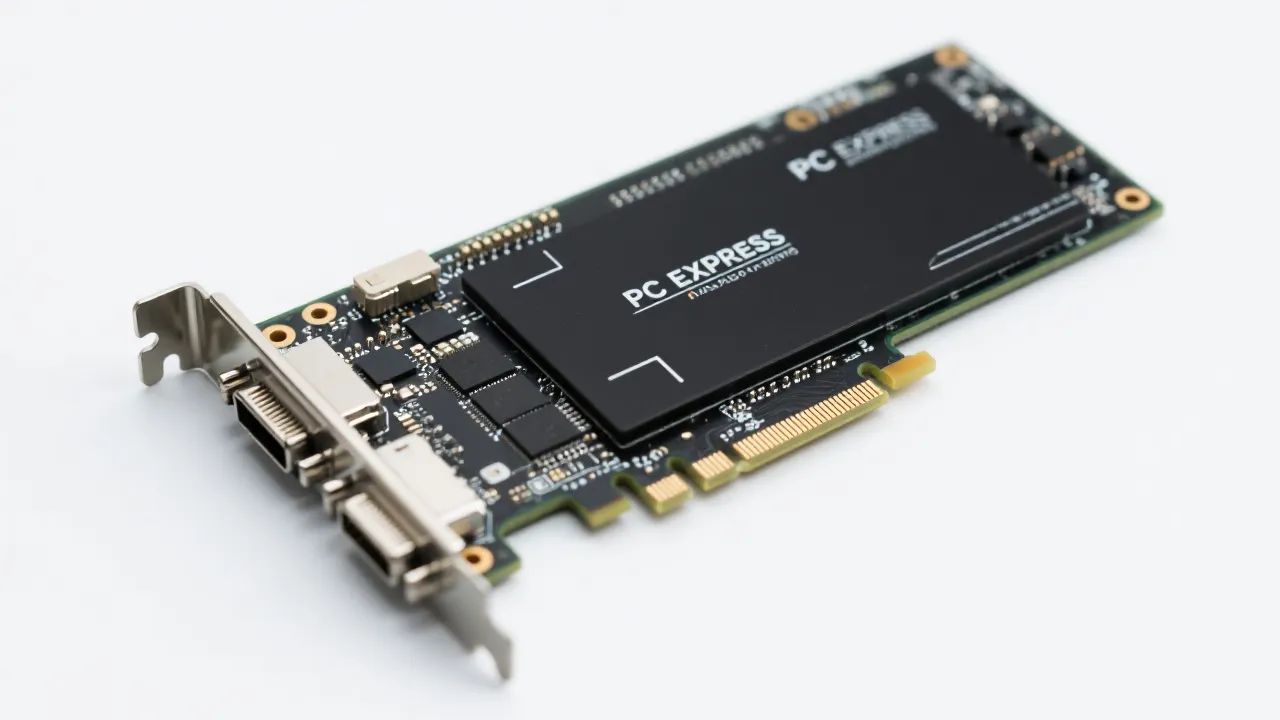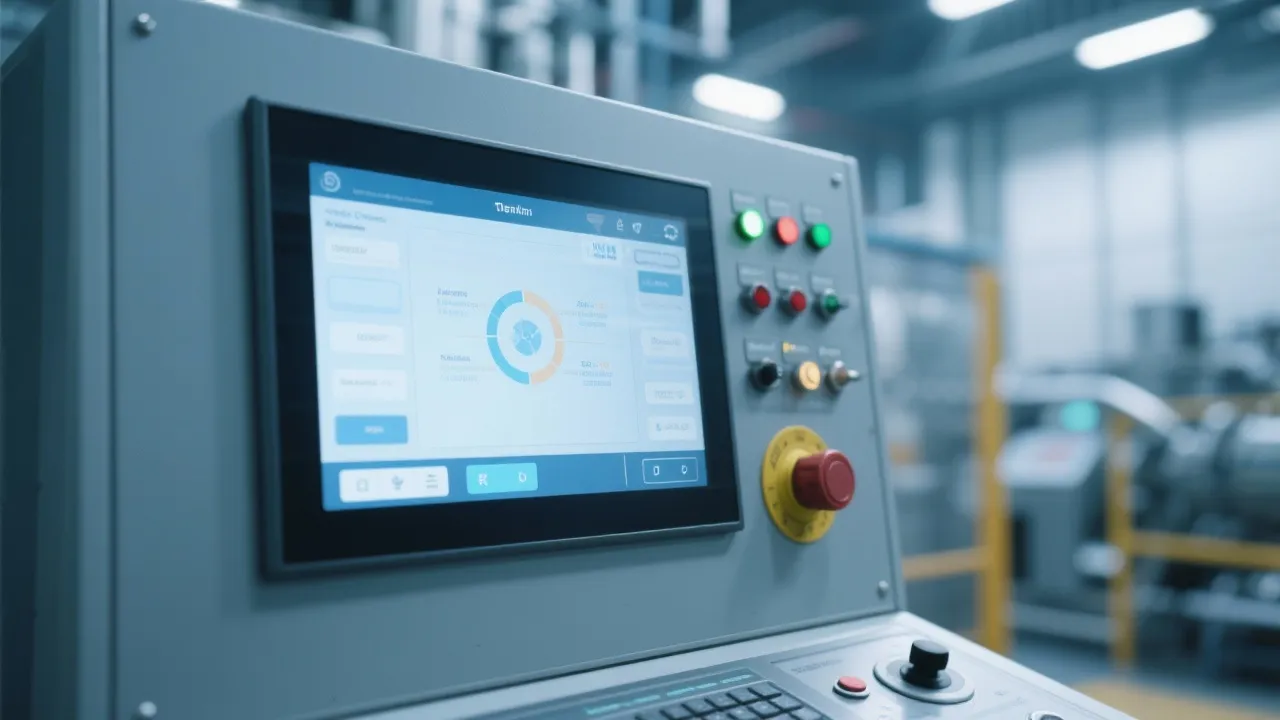Understanding the Pxie 8301 Interface
The PXIe 8301 is a versatile and high-performance module essential for modern data acquisition systems and test automation environments. Its pivotal role in facilitating quick and efficient data transmission makes it an industry leader. Garnering insights from its unique performance characteristics and industry usage, this exploration delves into how it enhances computational processes in various sectors.

Introduction to the PXIe 8301 Interface
The PXIe 8301 represents a significant leap in the field of data acquisition and transfer systems. As a pivotal component of the PXI Express (PXIe) technology, it stands out in enhancing the efficiency and reliability of test and automation solutions across various industries. At its core, the PXIe 8301 is designed to bridge high-speed data transfers, leveraging the latest PCI Express infrastructure to streamline operations. This technological advancement is particularly critical in an era where data-driven decision-making is at the forefront of all disciplines, from telecommunications to automotive innovation.
Within the ever-evolving landscape of technology, the manner in which data is processed and transferred plays a vital role. The PXIe 8301 facilitates not only speed but also reliability, enabling engineers and developers to create systems that can handle the complexities of modern data load requirements. This module serves as the backbone for applications requiring robust data handling and real-time analysis, underscoring its importance in high-performance computing environments.
Unpacking the Features of PXIe 8301
The PXIe 8301 module incorporates state-of-the-art technology, which is evident in its robust performance metrics. Its high-bandwidth connection capabilities facilitate seamless data flow, essential for complex computational tasks. The module supports a dual Thunderbolt 3 interface, ensuring that users have access to both flexibility and speed in data handling. With the burgeoning demand for high-speed connectivity, the PXIe 8301 effectively meets this need, making it a vital asset for industries aiming to enhance productivity through efficient data exchange.
One of the standout features of the PXIe 8301 is its ability to connect directly to a host PC via Thunderbolt, which enhances the ease of integration into existing systems. This capability is particularly advantageous for organizations looking to modernize their testing setups without undertaking complete system overhauls. Additionally, the module's design emphasizes compactness and low latency, critical for applications in research, engineering, and manufacturing settings where space and speed are at a premium. The marriage of these features allows for greater system efficiency, ensuring that high data volumes can be processed with minimal delay, which is particularly useful in scenarios that demand real-time data processing.
The Impact of PXIe 8301 in Various Industries
Industrially, the PXIe 8301 is a game-changer. Its deployment across a plethora of sectors has revolutionized the way data is transferred and managed. For instance, in the telecommunications field, it is invaluable in prototype testing and network optimization exercises, supporting a faster and more reliable exchange of information. With the global shift towards 5G networks, the need for reliable data handling becomes more pronounced, and the role of PXIe 8301 becomes vital in ensuring that telecommunications infrastructure can handle increased loads without service degradation.
The aerospace and defense sectors rely heavily on the high-throughput capabilities of the PXIe 8301 to streamline operations and enhance system diagnostics. The precision demanded by these industries necessitates data systems that not only perform well under pressure but also ensure a high degree of accuracy in data capture and analysis. As these sectors increasingly incorporate more complex technologies, the PXIe 8301 ensures that they can navigate the data needs of sophisticated applications, from radar signal processing to avionics testing, enabling more reliable and resilient systems that can operate effectively in the field.
The automotive industry benefits significantly from the precision and reliability offered by this module, particularly in testing Vehicle-to-Everything (V2X) communications, as automotive technology continues to push towards greater autonomy and connectivity. As vehicles become smarter and more interconnected, the demand for agile data handling solutions becomes critical. The PXIe 8301 meets these needs by providing a high-speed data interface that enhances communication protocols essential for the functioning of modern vehicles, ensuring safety and efficiency in operations.
Real-World Applications Featuring PXIe 8301
The potential applications of the PXIe 8301 extend beyond theoretical use cases, highlighting its versatility in real-world scenarios. Take the medical imaging sector, for example, where high-resolution data acquisition is paramount. The PXIe 8301 can be utilized in MRI and CT scan technologies, where vast amounts of data must be collected and processed efficiently to render images in real time. The high-speed transfer capabilities of the PXIe 8301 allows medical practitioners to obtain immediate results, improving diagnostics and patient outcomes.
In research and development laboratories, the PXIe 8301 powers complex measurements and analyses where precise data capturing is critical. Scientists and engineers can leverage its high bandwidth to create sophisticated testing environments, whether that be in physics experiments, material science trials, or electronic component validation. The accuracy and speed provided by the PXIe 8301 enable researchers to push the boundaries of innovation, yielding impactful discoveries and advancements in technology.
Furthermore, the media and entertainment industry utilizes the PXIe 8301 for high-density video streaming solutions, where speedbuffering and latency are critical factors. High-definition video processing, whether for live broadcast or post-production editing, demands rapid data throughput and minimal delays. The integration of the PXIe 8301 into their existing technology evolves their multimedia capabilities, enabling seamless integration of graphics, sound, and video content creation for enhanced viewer experiences.
FAQs on PXIe 8301
Q: What makes the PXIe 8301 superior for data acquisition tasks?
The PXIe 8301 excels in data acquisition due to its high-speed PCI Express lanes and Thunderbolt 3 connectivity, enabling high throughput and low latency transfer essential for time-sensitive applications. It stands out in environments where data must be processed almost instantaneously, a capability that is critical in fields such as finance and telecommunications.
Q: How does the dual Thunderbolt 3 interface benefit users?
This interface allows for a dual-host connection capability, ensuring redundancy and flexibility, which are crucial for maintaining uninterrupted operations and optimizing workload distribution. The ability to connect multiple systems simultaneously opens up possibilities for complex, high-data applications that can harness the benefits of distributed processing environments. Moreover, using Thunderbolt technology reduces the overhead of additional networking layers, resulting in faster communication between devices.
Q: Is the PXIe 8301 compatible with older systems?
While primarily designed for modern systems, it offers compatibility with some legacy systems through adaptable interface options, ensuring backward compatibility where necessary. This feature is particularly beneficial for organizations that wish to preserve investments in existing technology while leveraging new advancements in data transfer equipment.
The Technical Specifications of PXIe 8301
| Specification | Details |
|---|---|
| Host Interface | Dual Thunderbolt 3 |
| Data Transfer Speed | Up to 2.8 GB/s per direction |
| Compatibility | Compatible with PXI Express and CompactPCI systems |
| Latency | Low latency for high-speed operations |
| Dimensions | Compact design suitable for space-constrained environments |
| Operating Temperature Range | 0°C to 70°C for versatile application in varied environments |
| Power Requirements | Low power consumption for efficient operational costs |
Integrating PXIe 8301 into Your Systems
Integrating the PXIe 8301 into existing setups can yield substantial improvements in operational efficiency. Whether upgrading current systems or designing new architectures, the inclusion of this module can significantly improve data handling capacities. Its flexible connectivity options also allow for easy scalability, which is crucial for growing companies looking to enhance their technological infrastructure. The process of integration is designed to be user-friendly, allowing technical teams to implement it with minimal disruption to ongoing operations.
To successfully integrate the PXIe 8301, a comprehensive understanding of the existing data architecture is crucial. This involves assessing current bandwidth needs, latency tolerances, and future scalability requirements. Collaboration with both hardware and software engineers can facilitate a smoother integration experience, ensuring that the module not only fits into the current system but also enhances overall performance. It may also be beneficial to conduct initial tests in a controlled environment to evaluate the module's performance before full-scale implementation.
The adaptability of the PXIe 8301 means that system architects can prioritize its deployment based on specific project timelines or operational goals. Its capability to augment both data throughput and processing speed can provide tangible benefits in shorter development cycles, enhancing an organization’s competitive edge within their respective industry.
Benefits of Using PXIe 8301 in Data Acquisition Systems
The choice to utilize the PXIe 8301 in data acquisition systems comes with a multitude of advantages. To begin with, its high data transfer rate ensures that large volumes of data can be efficiently collected in real-time, crucial for applications that monitor dynamic systems or require immediate feedback. For example, in automotive testing environments, automotive engineers can analyze data from various sensors during vehicle trials, ensuring that performance meets strict safety and regulatory standards.
Moreover, the PXIe 8301's compact form factor allows it to fit into existing PXI Express chassis without requiring excessive space. Given the trend toward miniaturization in technology, this characteristic allows organizations to maximize their available resources and minimize the physical footprint of testing equipment. As many industries face pressure to reduce their environmental impact, compact systems promote energy efficiency and reduce waste.
The module's implementation also signifies a commitment to adopting cutting-edge technology, which can bolster an organization’s reputation in its industry. By using high-performance data acquisition tools like the PXIe 8301, companies position themselves as forward-thinking and tech-savvy, which can be appealing to potential clients and partners alike. Additionally, using state-of-the-art technology can enhance employee satisfaction and retention, as team members are equipped with quality tools to perform their jobs effectively.
Conclusion
Overall, the PXIe 8301 module represents a pivotal advancement in the arena of data transfer technologies. Its application in various industries has proven indispensable, offering solutions that help streamline operations and improve data management processes. Companies looking to leverage high-speed data capabilities should consider the PXIe 8301 as a cornerstone for building robust data acquisition and testing environments.
The future of data acquisition and processing technology is bright, and solutions like the PXIe 8301 are leading the way. Its role in advancing data transfer efficiency facilitates deeper insights and smarter decision-making across an array of sectors. As industries become increasingly reliant on data for competitive advantage, the PXIe 8301’s robust capabilities position it as an essential tool in the modern technological toolkit.
Investing in the PXIe 8301 today not only prepares organizations for the present demands of data processing but also future-proofs them against the rapid advancements in technology expected in the coming years. The ongoing evolution of data-intensive applications will undoubtedly create new challenges and opportunities; therefore, equipping systems with advanced interfaces like the PXIe 8301 will serve to enhance performance, reliability, and productivity in an increasingly competitive global market.










